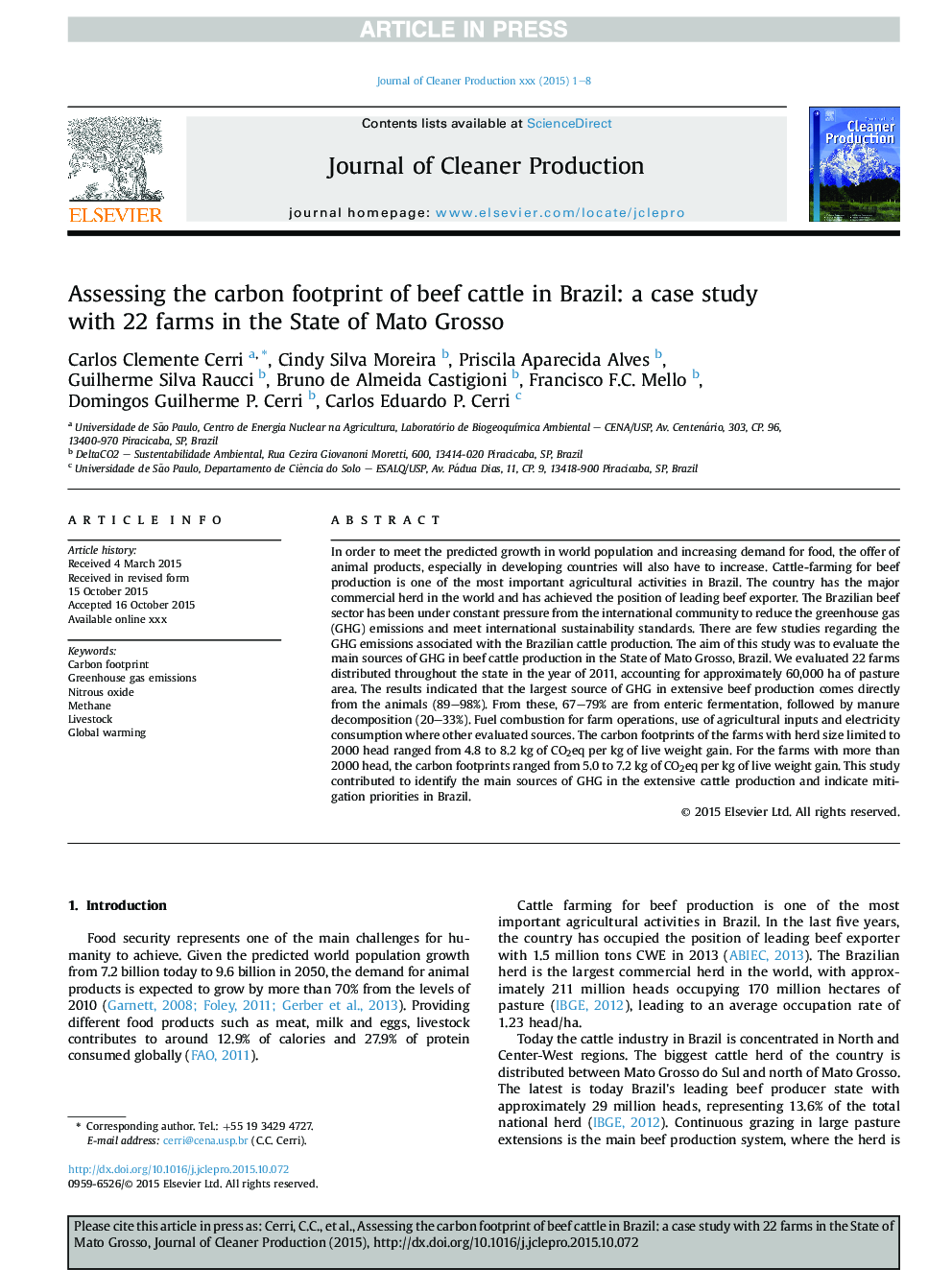| Article ID | Journal | Published Year | Pages | File Type |
|---|---|---|---|---|
| 10687848 | Journal of Cleaner Production | 2016 | 8 Pages |
Abstract
In order to meet the predicted growth in world population and increasing demand for food, the offer of animal products, especially in developing countries will also have to increase. Cattle-farming for beef production is one of the most important agricultural activities in Brazil. The country has the major commercial herd in the world and has achieved the position of leading beef exporter. The Brazilian beef sector has been under constant pressure from the international community to reduce the greenhouse gas (GHG) emissions and meet international sustainability standards. There are few studies regarding the GHG emissions associated with the Brazilian cattle production. The aim of this study was to evaluate the main sources of GHG in beef cattle production in the State of Mato Grosso, Brazil. We evaluated 22 farms distributed throughout the state in the year of 2011, accounting for approximately 60,000Â ha of pasture area. The results indicated that the largest source of GHG in extensive beef production comes directly from the animals (89-98%). From these, 67-79% are from enteric fermentation, followed by manure decomposition (20-33%). Fuel combustion for farm operations, use of agricultural inputs and electricity consumption where other evaluated sources. The carbon footprints of the farms with herd size limited to 2000 head ranged from 4.8 to 8.2Â kg of CO2eq per kg of live weight gain. For the farms with more than 2000 head, the carbon footprints ranged from 5.0 to 7.2Â kg of CO2eq per kg of live weight gain. This study contributed to identify the main sources of GHG in the extensive cattle production and indicate mitigation priorities in Brazil.
Related Topics
Physical Sciences and Engineering
Energy
Renewable Energy, Sustainability and the Environment
Authors
Carlos Clemente Cerri, Cindy Silva Moreira, Priscila Aparecida Alves, Guilherme Silva Raucci, Bruno de Almeida Castigioni, Francisco F.C. Mello, Domingos Guilherme P. Cerri, Carlos Eduardo P. Cerri,
